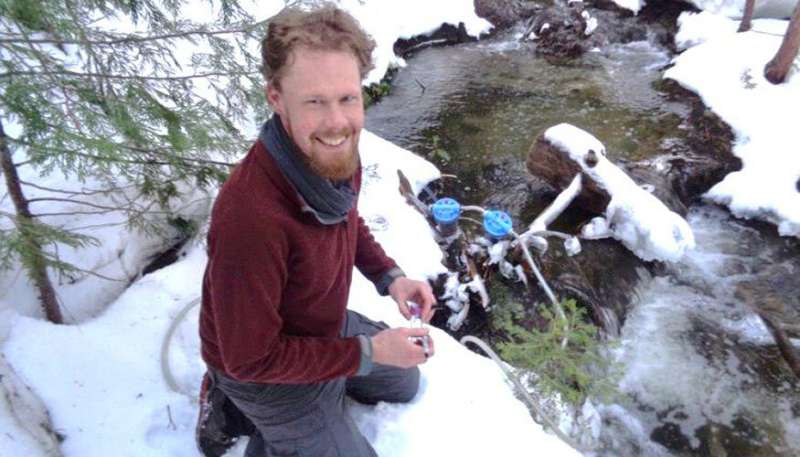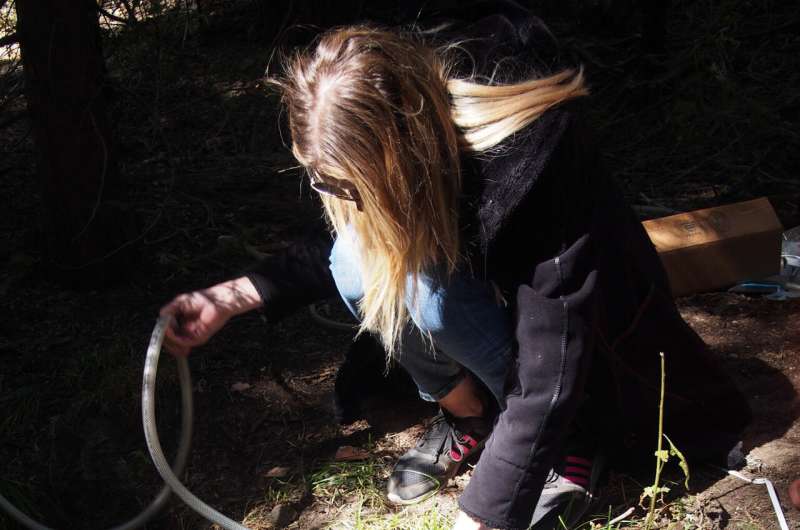Lab scientists use radioactive tracers to determine the ages of streamflow

Watersheds store water underground in soils and weathered bedrock. How long it takes for water to flow through the subsurface to feed streams is difficult to measure but important for understanding how watersheds function.
Lawrence Livermore National Laboratory (LLNL) researchers and their collaborators have studied the mixture of water ages in Providence Creek, a stream in the southern Sierra Nevada, California, using naturally occurring radioactive isotopes of hydrogen (tritium), sodium‐22 and sulfur‐35. The amount of these isotopes decreases because of radioactive decay as water spends more time underground. Each of these isotopes has a distinct half‐life (12.3 years, 2.6 years, and 87 days, respectively). By using this combination of isotopes, the team was able to tease out the mixture of water ages in the stream.
This information helps scientists understand how the subsurface "selects" water from storage to generate streamflow. The researchers found that during dry conditions at Providence Creek, streamflow consists mainly of old groundwater, but during wet conditions it includes younger water. Based on the age mixtures of stream water, they also were able to estimate how much water the Providence Creek watershed stores in the subsurface. Based on the age mixtures of stream water, the team estimated that the Providence Creek watershed stores 3 meters of water in the subsurface.
"This is the first study to illustrate how we can use cosmogenic radioactive isotopes to reveal the dynamic watershed behavior and constrain subsurface architecture," said LLNL scientist Ate Visser, lead author of the paper appearing in journal Water Resources Research.

More information: A. Visser et al. Cosmogenic Isotopes Unravel the Hydrochronology and Water Storage Dynamics of the Southern Sierra Critical Zone, Water Resources Research (2019). DOI: 10.1029/2018WR023665
Journal information: Water Resources Research
Provided by Lawrence Livermore National Laboratory





















